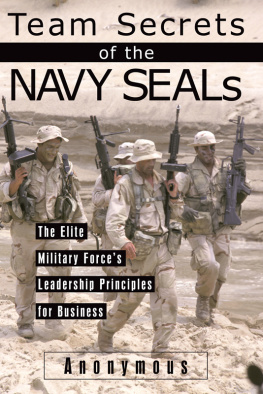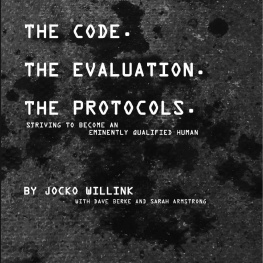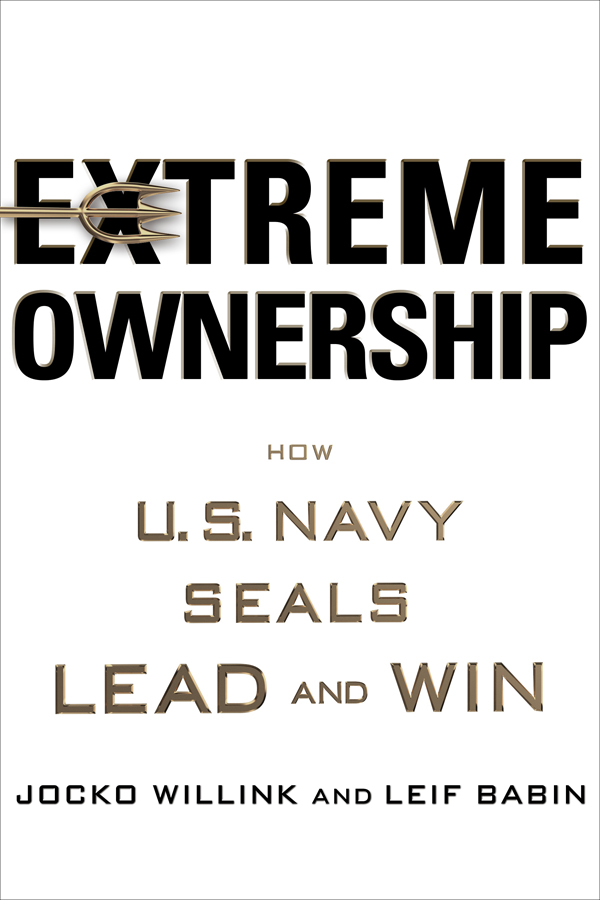Contents
Guide

The author and publisher have provided this e-book to you for your personal use only. You may not make this e-book publicly available in any way. Copyright infringement is against the law. If you believe the copy of this e-book you are reading infringes on the authors copyright, please notify the publisher at: us.macmillanusa.com/piracy.
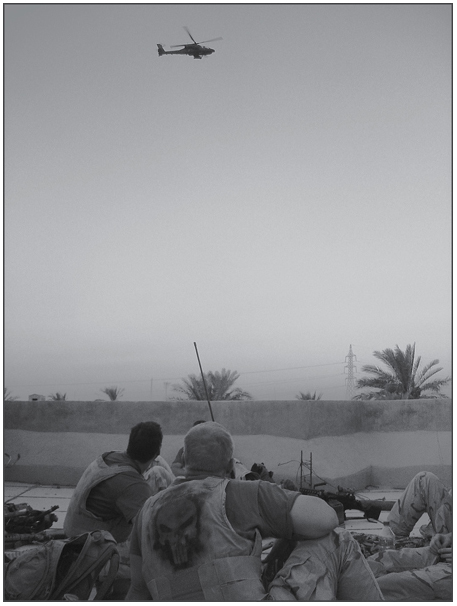
Dawn breaks over South-Central Ramadi. Task Unit Bruiser, Charlie Platoon sniper overwatch deep into enemy territory with AH-64 Apache gunship overhead. Enemy fighters shot thousands of rounds at the helicopter as they overflew the city.
(Photo courtesy of the authors)
Dedicated to Marc Lee, Mike Monsoor, and Ryan Jobthree courageous warriors, SEAL teammates, and friendswho valiantly wielded their big machine guns on the mean streets of Ramadi and laid down their lives so that others might live.
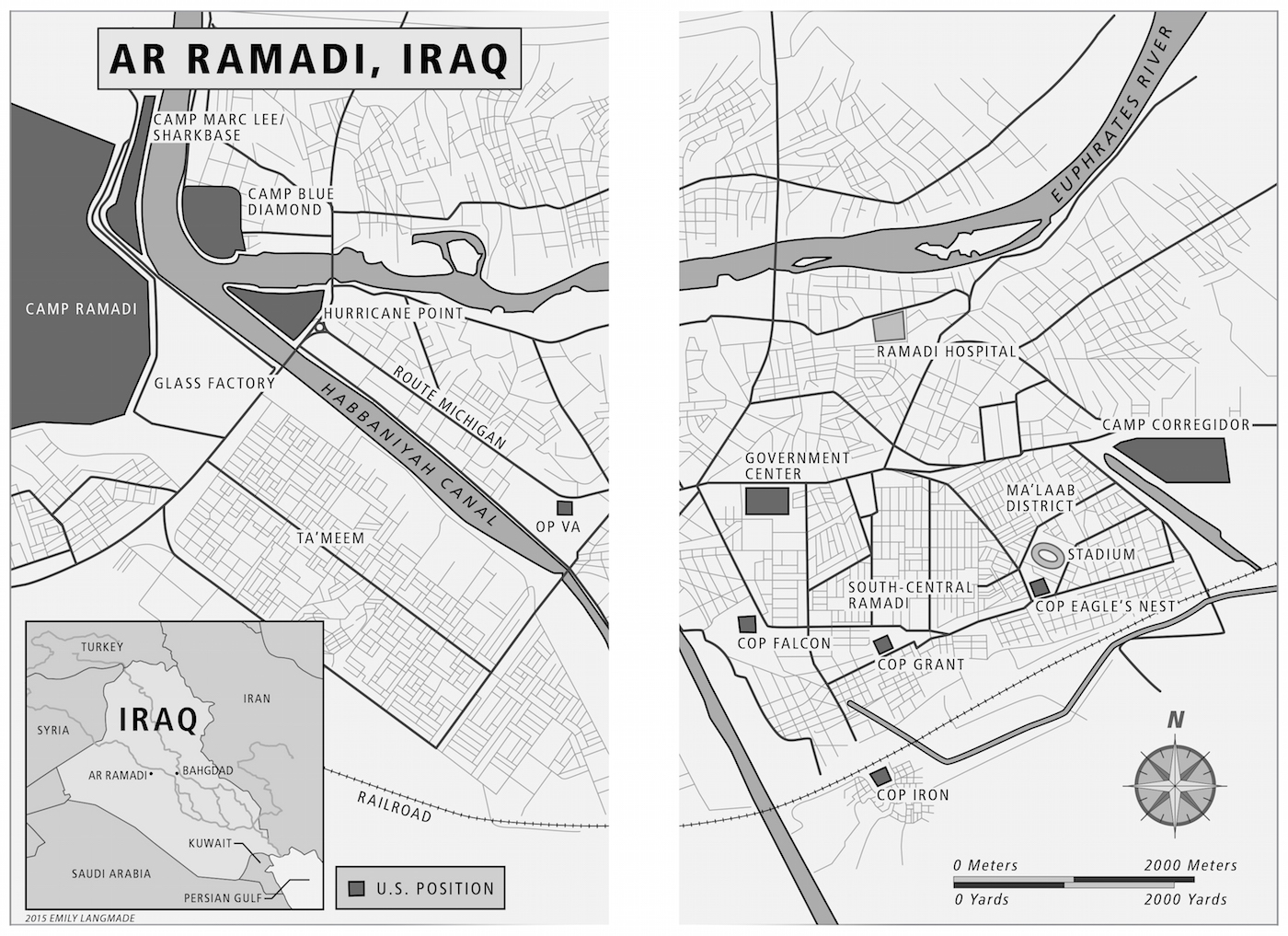
So, there I was.
Plenty of glorified war stories start like that. In the SEAL Teams, we make fun of those who tell embellished tales about themselves. A typical war story told in jest about something a SEAL did usually begins like this: So, no shit, there I was, knee-deep in grenade pins.
This book isnt meant to be an individuals glorified war story. As SEALs, we operate as a team of high-caliber, multitalented individuals who have been through perhaps the toughest military training and most rigorous screening process anywhere. But in the SEAL program, it is all about the Team . The sum is far greater than the parts. We refer to our professional warfare community simply as the Teams. We call ourselves team guys. This book describes SEAL combat operations and training through our eyesfrom our individual perspectivesand applies our experience to leadership and management practices in the business world.
Yet, our SEAL operations were not about us as individuals; our stories are of the SEAL platoon and task unit we were lucky enough to lead. Chris Kyle, the SEAL sniper and author of the best seller American Sniper, which inspired the movie, was one member of that platoon and task unitCharlie Platoons lead sniper and point man in Task Unit Bruiser. He played a part in the combat examples in this book, as did a host of other teammates who, though deserving of recognition, remain out of the spotlight. Far from being ours alone, the war stories in this book are of the brothers and leaders we served with and fought alongsidethe Team. The combat scenarios describe how we confronted obstacles as a team and overcame those challenges together. After all, there can be no leadership where there is no team.
* * *
Between the Vietnam War and the Global War on Terrorism, the U.S. military experienced a thirty-year span of virtually no sustained combat operations. With the exception of a few flashes of conflict (Grenada, Panama, Kuwait, Somalia), only a handful of U.S. military leaders had any real, substantial combat experience. In the SEAL Teams, these were the dry years. As those who served in heavy combat situations in the jungles of Vietnam retired, their combat leadership lessons faded.
All that changed on September 11, 2001, when the horrific terrorist attacks on the U.S. homeland launched America once again into sustained conflict. More than a decade of continuous war and tough combat operations in Iraq and Afghanistan gave birth to a new generation of leaders in the ranks of Americas fighting forces. These leaders were forged not in classrooms through hypothetical training and theory, but through practical, hands-on experience on the front lines of warthe front echelon. Leadership theories were tested in combat; hypotheses put through trials of fire. Across the ranks of the U.S. military services, forgotten wartime lessons were rewrittenin blood. Some leadership principles developed in training proved ineffective in actual combat. Thus, effective leadership skills were honed while those that proved impractical were discarded, spawning a new generation of combat leaders from across the broad ranks of all U.S. military servicesArmy, Marine Corps, Navy, Air Forceand those of our allies. The U.S. Navy SEAL Teams were at the forefront of this leadership transformation, emerging from the triumphs and tragedies of war with a crystallized understanding of what it takes to succeed in the most challenging environments that combat presents.
Among this new generation of combat leaders there are many war stories. After years of successful operations, including the heroic raid that killed Osama bin Laden, U.S. Navy SEALs have piqued the publics interest and received more attention than most of us ever wanted. This spotlight has shed light on aspects of our organization that should remain secret. In this book, we are careful not to remove that shroud any further. We do not discuss classified programs or violate nondisclosure agreements surrounding our operational experiences.
Many SEAL memoirs have been writtensome by experienced and well-respected operators who wanted to pass on the heroic deeds and accomplishments of our tribe; a few, unfortunately, by SEALs who hadnt contributed much to the community. Like so many of our SEAL teammates, we had a negative view when SEAL books were published.
Why then would we choose to write a book? As battlefield leaders, we learned extremely valuable lessons through success and failure. We made mistakes and learned from them, discovering what works and what doesnt. We trained SEAL leaders and watched them implement the principles we ourselves had learned with the same success on difficult battlefields. Then, as we worked with businesses in the civilian sector, we again saw the leadership principles we followed in combat lead to victory for the companies and executives we trained. Many people, both in the SEAL Teams and in the businesses we worked with, asked us to document our lessons learned in a concrete way that leaders could reference.
We wrote this book to capture those leadership principles for future generations, so that they may not be forgotten, so that as new wars begin and end, such crucial lessons will not have to be relearnedrewritten in more blood. We wrote this so that the leadership lessons can continue to impact teams beyond the battlefield in all leadership situationsany company, team, or organization in which a group of people strives to achieve a goal and accomplish a mission. We wrote this book for leaders everywhere to utilize the principles we learned to lead and win.
Who are we to write such a book? It may seem that anyone who believes they can write a book on leadership must think themselves the epitome of what every leader should aspire to be. But we are far from perfect. We continue to learn and grow as leaders every day, just as any leaders who are truly honest with themselves must. We were simply fortunate enough to experience an array of leadership challenges that taught us valuable lessons. This book is our best effort to pass those lessons on, not from a pedestal or a position of superiority, but from a humble place, where the scars of our failings still show.
We are Jocko Willink and Leif Babin, SEAL officers who served together in Ar Ramadi, Iraq, during Operation Iraqi Freedom. There, we became intimately familiar with the humbling trials of war. We were lucky enough to build, train, and lead high-performance, winning teams that proved exceptionally effective. We saw firsthand the perils of complacency, having served on a battlefield where at any time the possibility of our position being overrun by a large force of well-armed enemy fighters was quite real. We know what it means to failto lose, to be surprised, outmaneuvered, or simply beaten. Those lessons were the hardest, but perhaps the most important. We learned that leadership requires belief in the mission and unyielding perseverance to achieve victory, particularly when doubters question whether victory is even possible. As SEAL leaders, we developed, tested, confirmed, and captured an array of leadership lessons as well as management and organizational best practices. We then built and ran SEAL leadership training and helped write the doctrine for the next generation of SEAL leaders.



